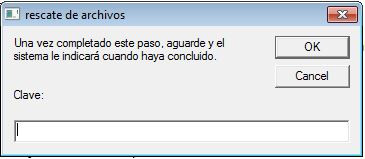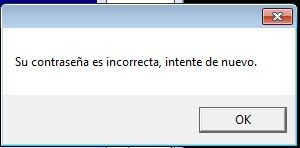RANSOM_CRYPJACKY.A
BAT/Filecoder.CryptoJacky.A (ESET-NOD32 ), BAT/Filecoder_CryptoJacky.A!tr (Fortinet)
Windows


Threat Type: Trojan
Destructiveness: No
Encrypted:
In the wild: Yes
OVERVIEW
This Trojan arrives on a system as a file dropped by other malware or as a file downloaded unknowingly by users when visiting malicious sites.
It is capable of encrypting files in the affected system.
TECHNICAL DETAILS
Arrival Details
This Trojan arrives on a system as a file dropped by other malware or as a file downloaded unknowingly by users when visiting malicious sites.
Installation
This Trojan drops the following files:
- %Application Data%\r_tool\ransomware-c.exe
- %Application Data%\r_tool\aescrypt.exe - aes encryptor
- %Application Data%\r_tool\cts-input.vbs - Password input window, executes ransomware-d.cmd
- %Application Data%\r_tool\cts-input_error.vbs - Incorrect password window
- %Application Data%\r_tool\file_extensions.txt - file extensions to be encrypted
- %Application Data%\r_tool\ransom-information.vbs - ransom information note
- %Application Data%\r_tool\ransom-instructions.vbs - note on how to pay ransom
- %Application Data%\r_tool\ransom-thanks.vbs - successful decryption note
- %Application Data%\r_tool\ransomware-d.cmd - contains decryptor
- %User Temp%\{4 random characters}.tmp\{4 random characters}.bat - contains encryption commands
- %Desktop%\ransom-instructions.lnk - points to ransom-instructions.vbs
- %Desktop%\ransom of files.lnk - points to cts-input.vbs
- %Desktop%\ransom-payment.url- contains urls
(Note: %Application Data% is the Application Data folder, where it usually is C:\Documents and Settings\{user name}\Application Data on Windows 2000, Windows Server 2003, and Windows XP (32- and 64-bit); C:\Users\{user name}\AppData\Roaming on Windows Vista (32- and 64-bit), Windows 7 (32- and 64-bit), Windows 8 (32- and 64-bit), Windows 8.1 (32- and 64-bit), Windows Server 2008, and Windows Server 2012.. %User Temp% is the user's temporary folder, where it usually is C:\Documents and Settings\{user name}\Local Settings\Temp on Windows 2000, Windows Server 2003, and Windows XP (32- and 64-bit); C:\Users\{user name}\AppData\Local\Temp on Windows Vista (32- and 64-bit), Windows 7 (32- and 64-bit), Windows 8 (32- and 64-bit), Windows 8.1 (32- and 64-bit), Windows Server 2008, and Windows Server 2012.. %Desktop% is the desktop folder, where it usually is C:\Documents and Settings\{user name}\Desktop in Windows 2000, Windows Server 2003, and Windows XP (32- and 64-bit); C:\Users\{user name}\Desktop in Windows Vista (32- and 64-bit), Windows 7 (32- and 64-bit), Windows 8 (32- and 64-bit), Windows 8.1 (32- and 64-bit), Windows Server 2008, and Windows Server 2012.)
Other Details
This Trojan renames encrypted files using the following names:
- {Original filename and extension}.aes
It is capable of encrypting files in the affected system.
NOTES:
The ransomware encrypts files that have file extensions listed in %Application Data%\r_tool\file_extensions.txt.
Once done with encryption, the following window is displayed:

Clicking on %Desktop%\ransom-instructions.lnk displays the following window containing ransom instructions:

Clicking on %Desktop%\ransom of files.lnk displays the following window for decryption:

Entering the wrong key will display the following messagebox:

Entering the correct key will decrypt the encrypted files and delete the dropped files located in %Desktop%. Once dercyption is finished, it will display the following:

The correct key is: jm+jacqui:ransom7.-
SOLUTION
Step 1
Before doing any scans, Windows XP, Windows Vista, and Windows 7 users must disable System Restore to allow full scanning of their computers.
Step 2
Note that not all files, folders, and registry keys and entries are installed on your computer during this malware's/spyware's/grayware's execution. This may be due to incomplete installation or other operating system conditions. If you do not find the same files/folders/registry information, please proceed to the next step.
Step 3
Search and delete this folder
- %Application Data%\r_tool
Step 4
Search and delete this file
- %User Temp%\{4 random characters}.tmp\{4 random characters}.bat
- %Desktop%\ransom-instructions.lnk
- %Desktop%\ransom of files.lnk
- %Desktop%\ransom-payment.url
Step 5
Scan your computer with your Trend Micro product to delete files detected as RANSOM_CRYPJACKY.A. If the detected files have already been cleaned, deleted, or quarantined by your Trend Micro product, no further step is required. You may opt to simply delete the quarantined files. Please check this Knowledge Base page for more information.
Step 6
Restore encrypted files from backup.
Did this description help? Tell us how we did.

